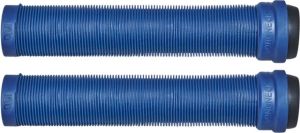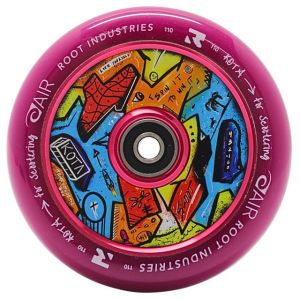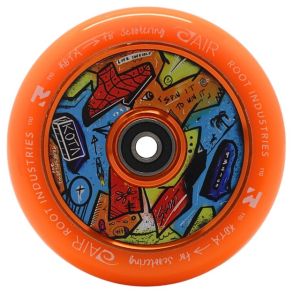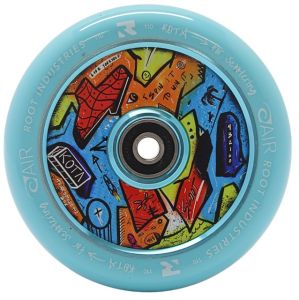Рули
FREESTYLE SCOOTER BARS
If you want to learn something about freestyle scooter handlebars, you must first of all be willing to do a now almost forgotten activity - reading.
Handlebars are a basic component of freestyle scooters. It is important to note that while freestyle scooter handlebars are designed for freestyle riding and are therefore durable, they are NOT indestructible. Like all human activities, the riding of freestyle scooters requires the heavy involvement of the grey cortex. You could also benefit from another one or two factors: Alteration of the laws of physics or the chemical table of elements. :-)
Handlebars are made of CrMo (chrome-molybdenum/steel), aluminium or titanium.
As far as weight is concerned and for the same dimensions, titanium handlebars are the lightest. Slightly heavier are aluminium handlebars. Significantly heavier are steel (CrMo) handlebars.
For the same dimensions, aluminium handlebars are approximately 30% lighter than steel (CrMo) handlebars.
Example (same size handlebars): aluminium handlebars weigh 900 gr, steel (CrMo) handlebars weigh 1200 gr, titanium handlebars weigh approximately 700 gr.
There are almost no steel (CrMo) handlebars (with standard dimensions) that weigh less than 1,000 gr.
In terms of durability, titanium handlebars are the strongest, followed by steel handlebars. Aluminum handlebars lay behind both titanium and steel handlebars in that aspect.
So why don't all riders use titanium handlebars? The reason is their price, which is a multiple of the price of steel (CrMo) or aluminium handlebars.
Aluminium handlebars should be the choice of riders who are in the lower weight category (under 50 kg) or have a clean riding style.
When using aluminium handlebars, it is essential that the part of the fork tube inside the handlebar overlaps the length of the handlebar slit by at least 1.5 cm. In terms of popularity, steel (CrMo) handlebars sell the most. Steel (CrMo) handlebars offer the optimum balance between durability and price.
HANDLEBARS CAN BE CLASSIFIED ACCORDING TO DIFFERENT CRITERIA
a) Material
Aluminium, steel (CrMo), titanium (see above)
b) Outer and inner diameter of the vertical tube of the handlebar
Outer diameter of handlebars: 31.8 mm and 34.9 mm
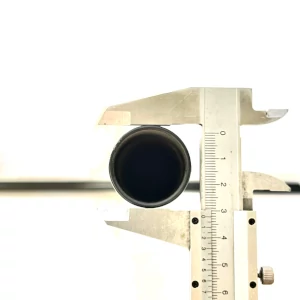
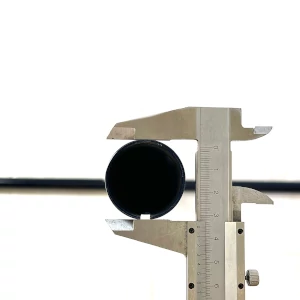
Inner diameter of handlebars: 28.7 mm, 31.8 mm and approx. 25 mm.
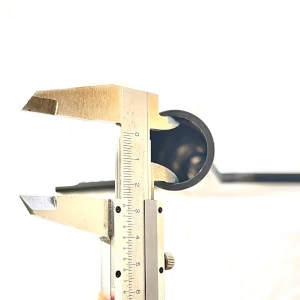
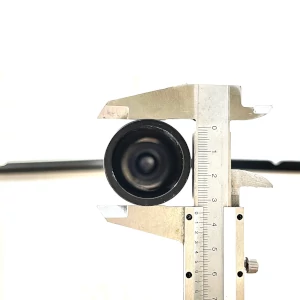
The 25 mm inner diameter is very specific and is used on a very small number of aluminium handlebars with an outer diameter of 31.8 mm.
Handlebars with an inner diameter of approx. 25 mm (we deliberately state approx. because there may be deviations from this diameter) can only be used with SCS compression! Steel and titanium handlebars are available in two different dimensions (diameters)
1) 31.8 mm outer diameter and 28.7 inner diameter
2) 34.9 mm outer diameter and 31.8 mm inner diameter
Steel and titanium handlebars with an outer diameter of 34.9 mm and an inner diameter of 31.8 mm are often referred to as Oversized or HIC handlebars and are designed for use with the HIC compression system. This descriptor is very often mentioned in the product name itself. If this descriptor is not in the name, the information is provided in the product description.
Aluminium handlebars have an outer diameter of 34.9 mm and an inner diameter of 28.7 mm except for aluminium handlebars with an inner diameter of 25 mm and an outer diameter of 31.8 mm. However, this is merely an exception.
As can be deduced from the above overview, aluminium handlebars have larger wall thicknesses for the same outer diameter.
c) Compression system compatibility i.e. IHC, SCS, HIC and
This issue is related to the inner and outer diameter of the handlebars. The abbreviations IHC, SCS, HIC and ICS refer to compression systems. What is a compression system? The function of a compression system is to compress the headset. Hence the name compression system. See the chapter on Compression Systems for more information.
IHC handlebars
- IHC handlebars must have a slit at the lower end of the tube
- They are made of steel, titanium or aluminum
- The outer diameter of steel and titanium handlebars must always be 31.8 mm (never 34.9 mm)
- The outer diameter of aluminium handlebars must always be 34,9 mm
- The inner diameter of the handlebars must always be 28,7 mm
ICS handlebars
- ICS handlebars must have a slit at the lower end of the tube
- They are made of steel or aluminium
- The outer diameter of steel handlebars must always be 31.8 mm (never 34.9 mm)
- The outer diameter of aluminium handlebars must always be 34.9 mm
- The inner diameter of the handlebars must always be 28.7 mm
- Our recommendation (after many years of experience): do not use steel handlebars with ICS compression system. The only exception is Ethic handlebars that use the proprietary ICS10 system.
- On the other hand, using the ICS compression system with aluminium handlebars is fine.
- If you want to use steel handlebars with a slit and a 31.8 mm outer diameter and don't want to use SCS (explained in the Compression Systems section), then use an IHC fork
SCS handlebars
- SCS handlebars do not have a slit at the lower end of the tube
- SCS handlebars are made of either steel or titanium (or aluminium).
- The outer diameter of SCS handlebars is either 31.8 mm or 34.9 mm
- Inner diameter of SCS handlebars is either 28.7 mm or 31.8 mm.
HIC handlebars
- HIC handlebars have a slit at the lower end of the tube
- The outer diameter of the HIC handlebars is 34.9 mm
- The inner diameter of the HIC handlebars is 31.8 mm
- HIC handlebars are made of either steel or titanium
d) Backsweep vs. Zero Backsweep
- Backsweep is the inclination of the horizontal handlebar tube towards the rider
- What are the benefits of a backsweep? The benefit is a more comfortable grip on the handlebars. However, as with all things, an advantage for one is a disadvantage for another.
- In general, but really only in general, wider handlebars are more comfortable when they have a backsweep.
- Zero Backsweep handlebars: handlebars that have a straight horizontal tube.
- How do I know if a handlebar has a backsweep? This is always stated in the product specification.
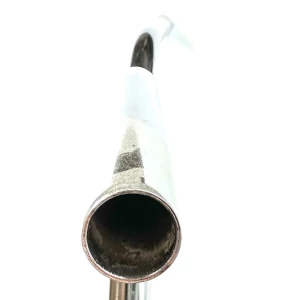
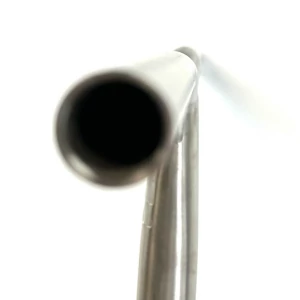
e) Handlebar shape: "Y" vs "T"
- The letters Y and T refer to the shape of the handlebar, which resembles either the letter Y or the letter T
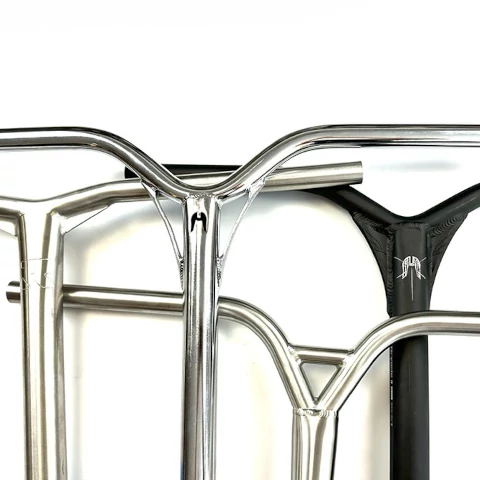
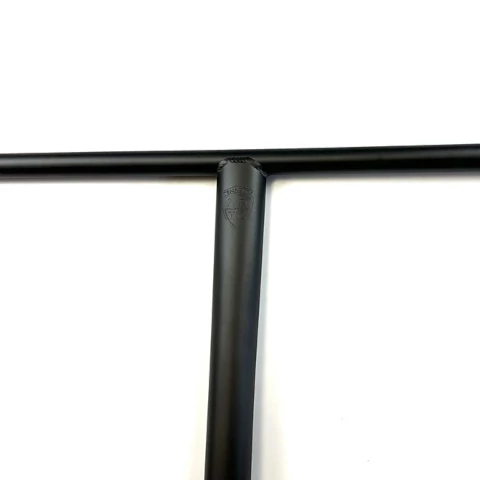
- For the same dimensions and material, T handlebars are lighter than Y handlebars
- In the past, Y handlebars were considered to be stronger overall than T handlebars. More advanced riders therefore preferred Y handlebars. The reason was durability. Due to the high demand for T handlebars, manufacturers improved the manufacturing technology, essentially leveling the durability of Y and T handlebars.
f) Handlebar dimensions i.e. height x width
- The recent trend is for taller and wider handlebars. There is a noticeable departure from the past when smaller handlebars were sought after.
- However, park riders are still looking for handlebars that are relatively smaller in height and width than street handlebars. Dimensionally small handlebars are more suitable for performing tricks in the skatepark.
- Street riders, on the other hand, look for tall and wide handlebars to make the scooter easier to control even at high speeds. Higher handlebars are also more suitable for performing a trick called bunnyhop.
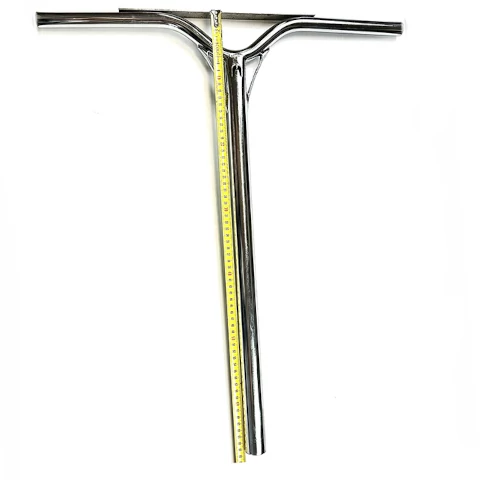
HOW TO EXTEND THE LIFESPAN OF THE HANDLEBARS
1) Treat your scooter well. Do not throw it around.
2) Get handlebars that match your height and weight, riding style and skill level (intermediate, advanced)
3) Perform tricks in a clean manner. The more you suppress the landing with your bent knees, the more you save not just the handlebars but also your joints.
4) Use your compression system correctly see. Compression systems
5) Handlebars must be properly fixed to the fork i.e. no gaps between fork tube and handlebars (related to point 4)
6) If you use a clamp then this clamp must completely cover the slit on the handlebars.
7) Do not lend your scooter to friends. They may weigh 30 kg more and have a completely different riding style
HOW TO CHOOSE THE RIGHT HANDLEBARS
1) Aluminium, steel or titanium handlebars?
Answer the following questions when choosing a handlebar material:
- How much do I weigh?
- What is my riding style? Do I perform tricks in a clean way?
- What is my riding skill level? Am I an intermediate or advanced rider?
- How much money do I have?
2) Compression system i.e. IHC, SCS, HIC and ICS
Every rider has different preferences so different riders will go for different compression systems. The best system, in our opinion, is SCS. Your existing compression system will also play a part in the decision. If you don't have an SCS, then buying an SCS is an additional expense.
Riders who prefer light scooters are more likely to opt for the IHC compression system.
3) Handlebar height and width
There is no right answer. Universally, low handlebars are usually used for skatepark riding and high handlebars for street riding. But this does not apply to everyone. The rider who buys new handlebars already has some experience with freestyle scootering and knows best what height and width suit him best.
4) If you are still unsure about the size of the handlebars, it is better to buy tall handlebars and then have them sized down.
5) Handlebar height and width are more of a topic for intermediate and advanced riders. Beginner riders practically do not buy handlebars. They buy complete scooters.

